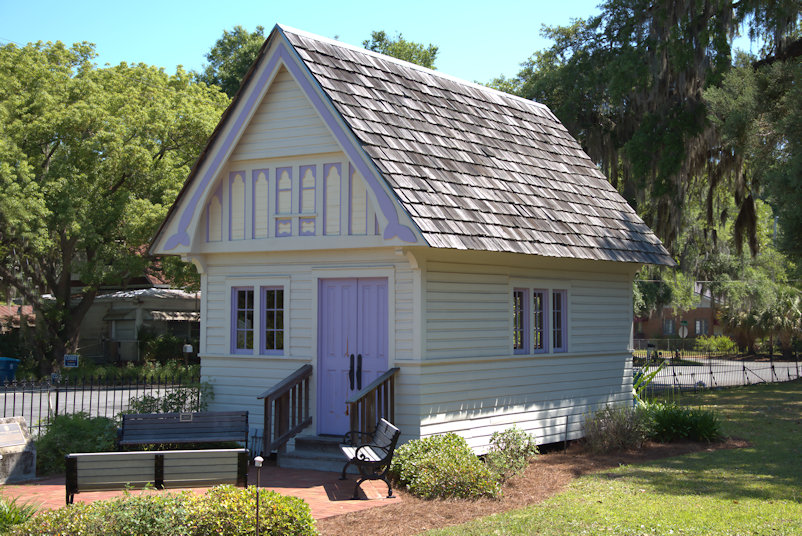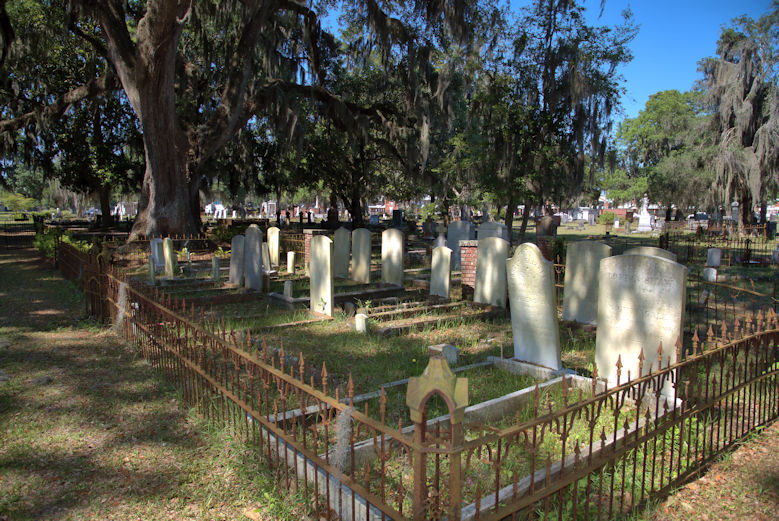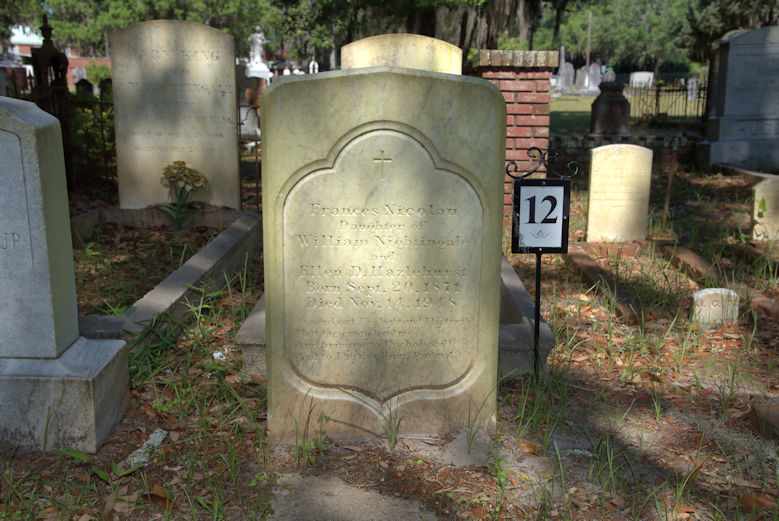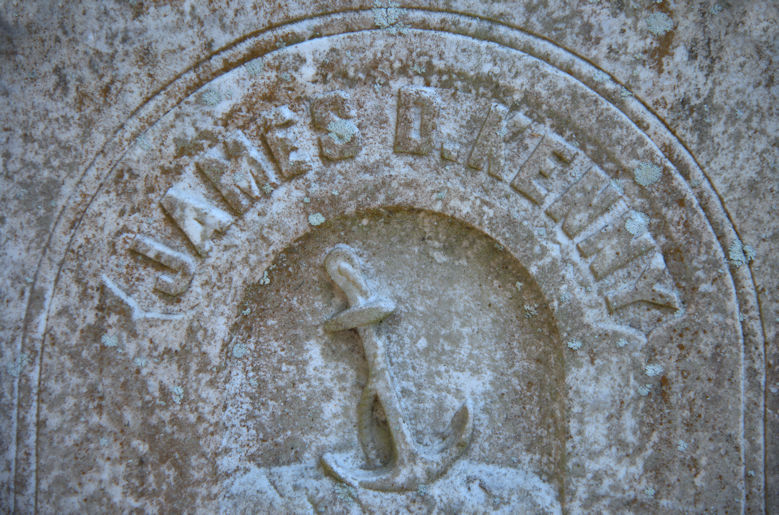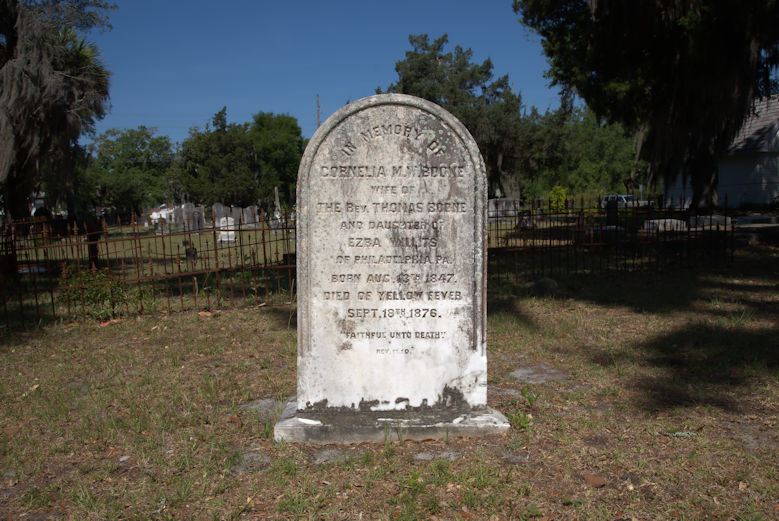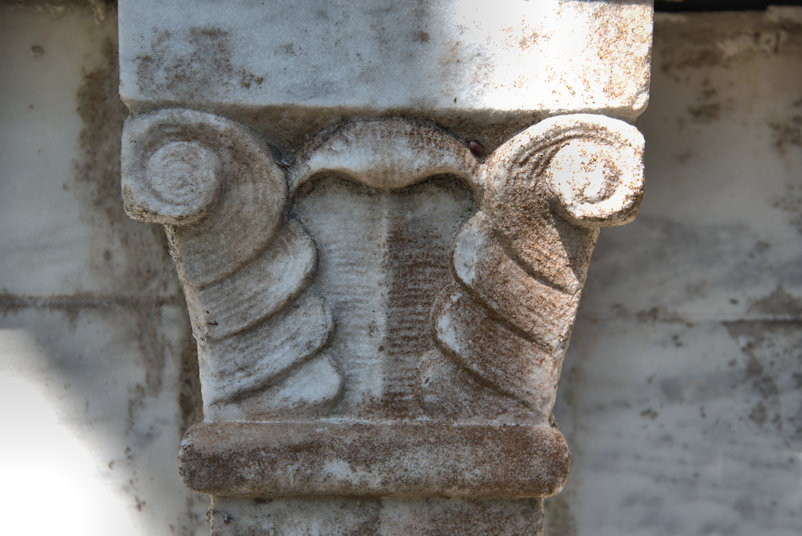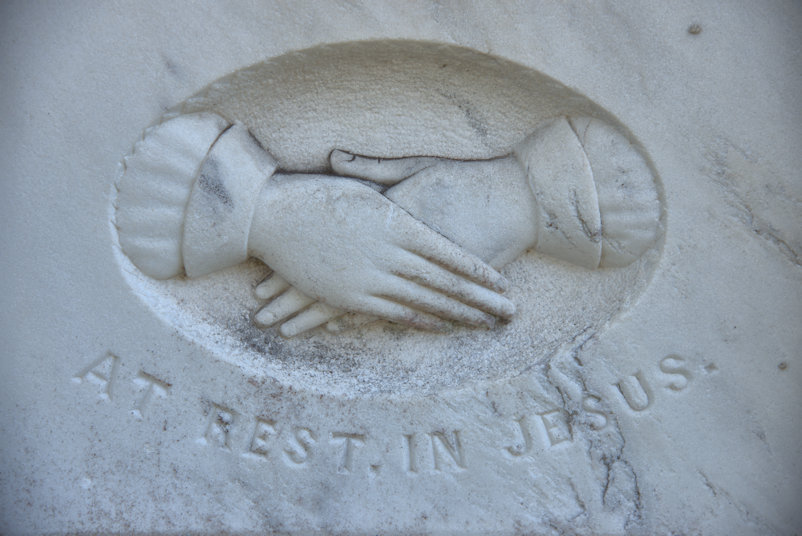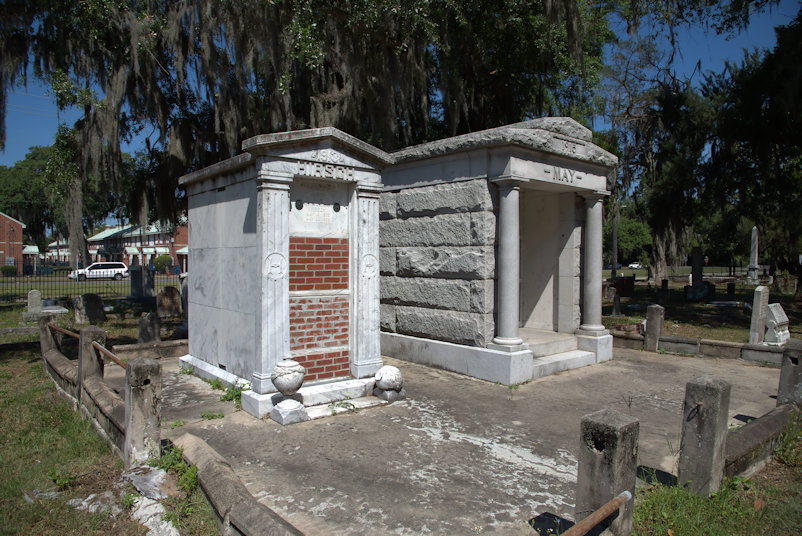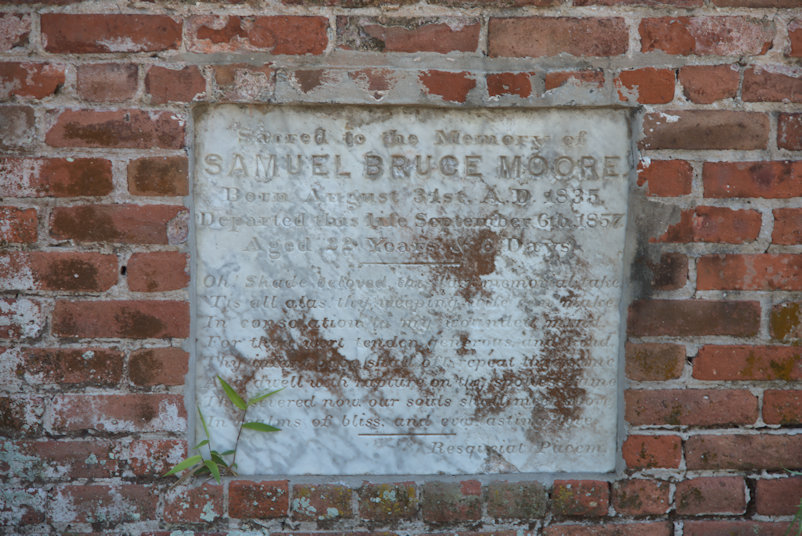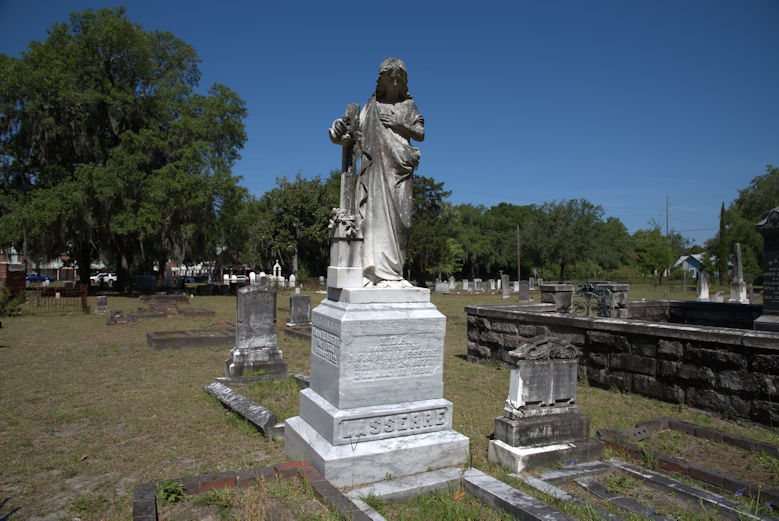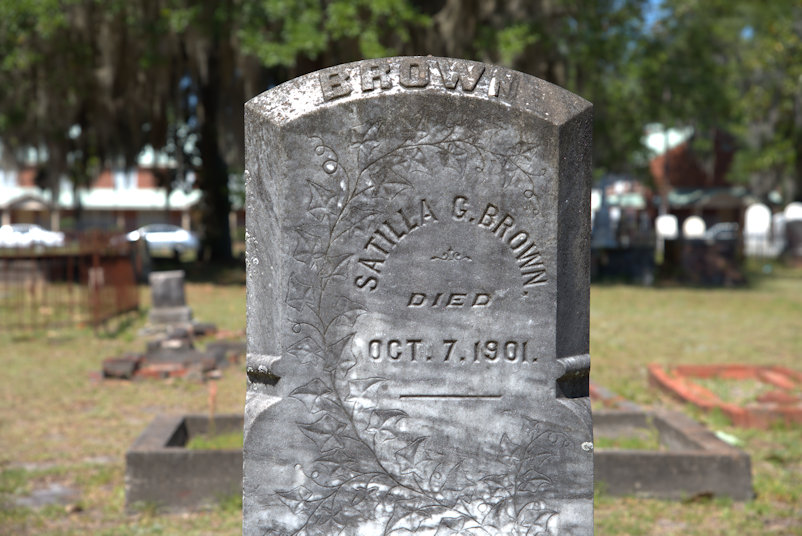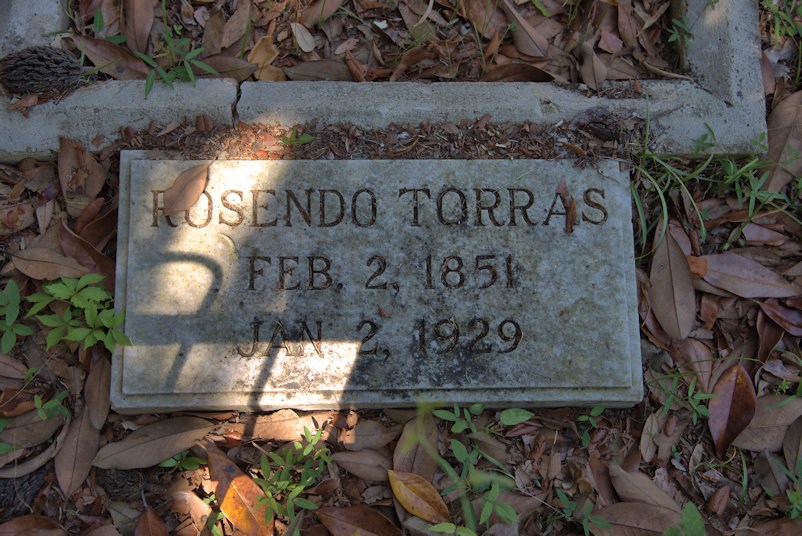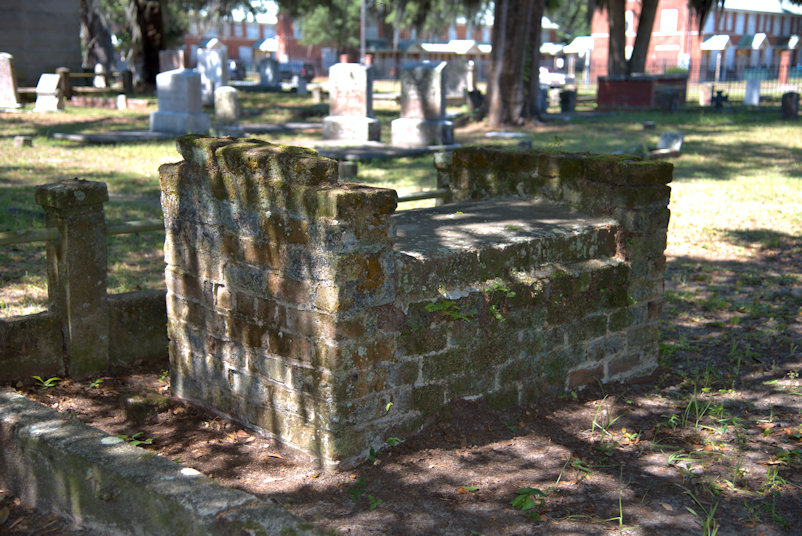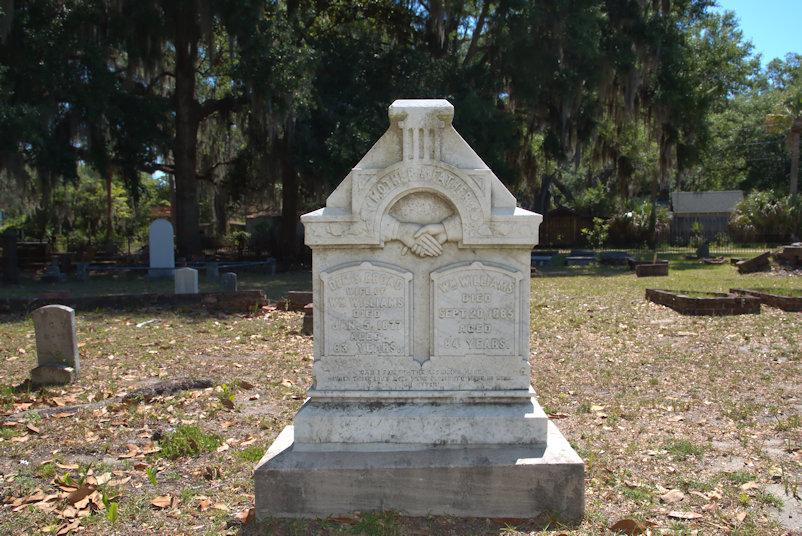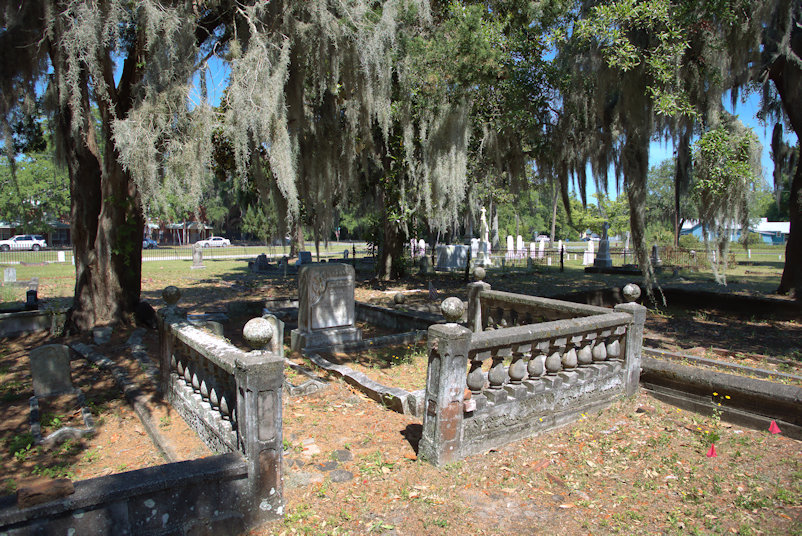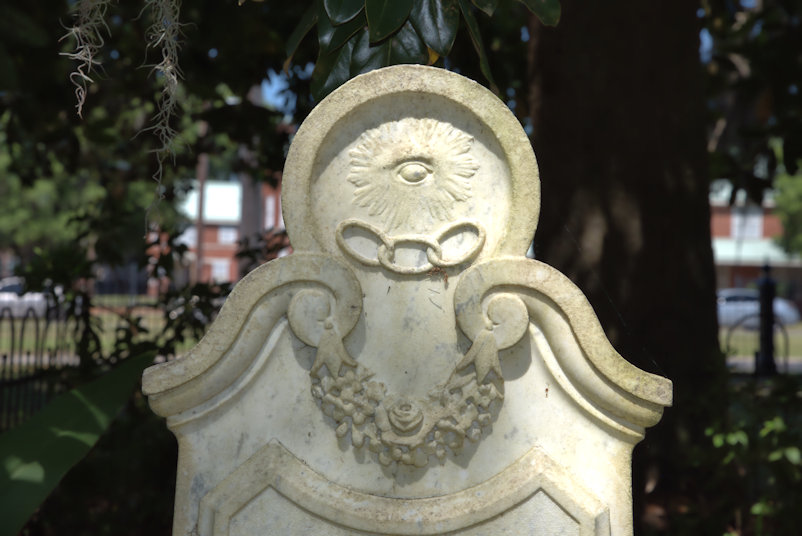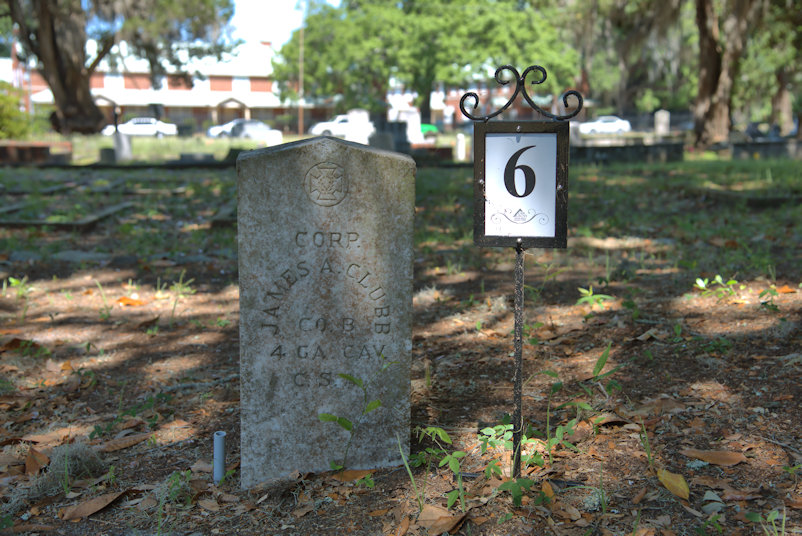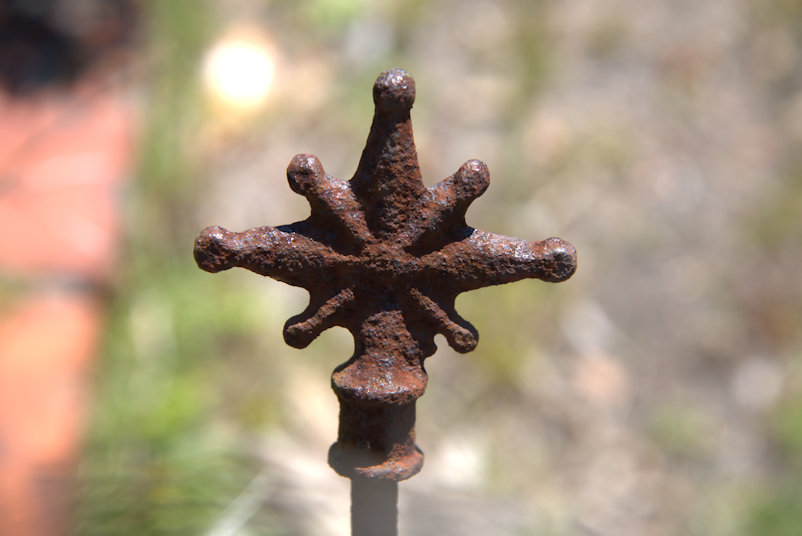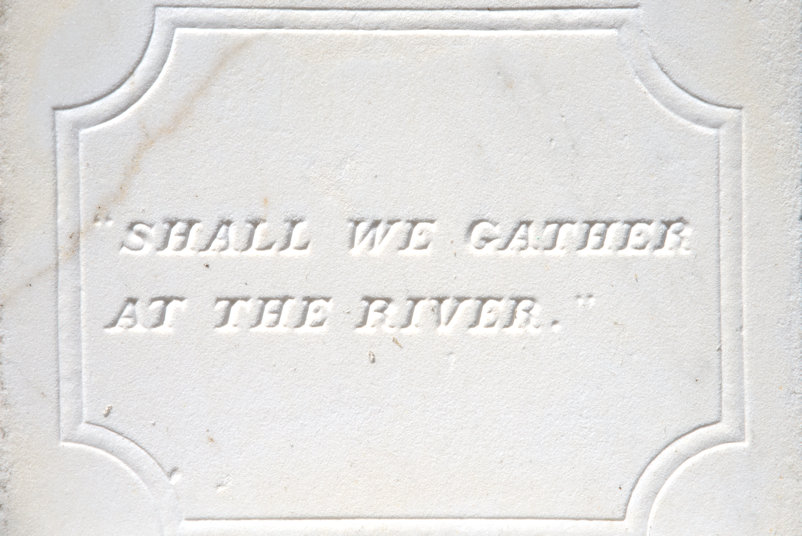
In the tradition of other historic cemeteries of Coastal Georgia, St. Andrew’s in Darien is worthy of note as an important public green space. An impressive collection of Victorian monuments share space with exceedingly rare tabby tombs.

Thomas Spalding (1774-1851), owner of Sapelo Island and one of the most influential men of early Georgia, established his family cemetery here in the early 1800s, adjacent to his mainland home, Ashantilly. A man of his time, Spalding’s wealth was entirely dependent on slave labor. His last official act was leading the Milledgeville Convention which officially declared that Georgia would use force to resist any efforts of abolition by the federal government. He fell ill on his way home and died at the home of his son Charles, in Darien.

The tombs of Spalding and wife Sarah Leake (1778-1843) are at the center of the original cemetery.

Hester Margery Spalding Cooke (1801-30 November 1824), daughter of Thomas & Sarah Spalding; wife of William Cooke (d. 1861).

Tombs of Spalding children, including, at center, Thomas Spalding (1813-1819). These tabby forms are among the rarest forms of grave markers in Georgia.

Even rarer is this tomb, featuring what appears to be the original lime sealing over the tabby.

The original section of the cemetery contains many tombs, including tabby, brick, and marble examples.

Some are in poor condition, with a few slabs unreadable and perhaps even on the wrong tombs.

All of the burials in this part of the cemetery are Spalding family members and in-laws.
 Names include Wylly, Bell, and Leake, among others.
Names include Wylly, Bell, and Leake, among others.
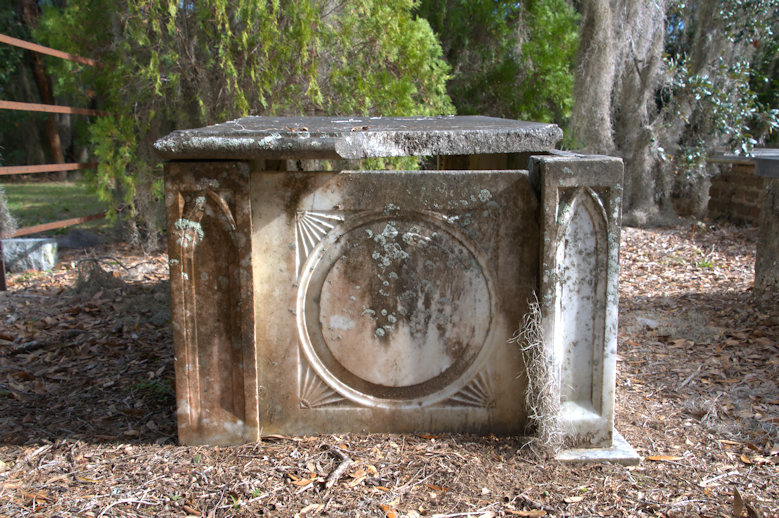
In 1867 Charles Spalding (1808-1887) donated the land surrounding the family plot to St. Andrew’s Episcopal Church for use by the city of Darien as a cemetery. The ground was consecrated in 1876 by the Right Reverend Dr. Beckwith, Bishop of Georgia and is known today as St. Andrew’s Cemetery.
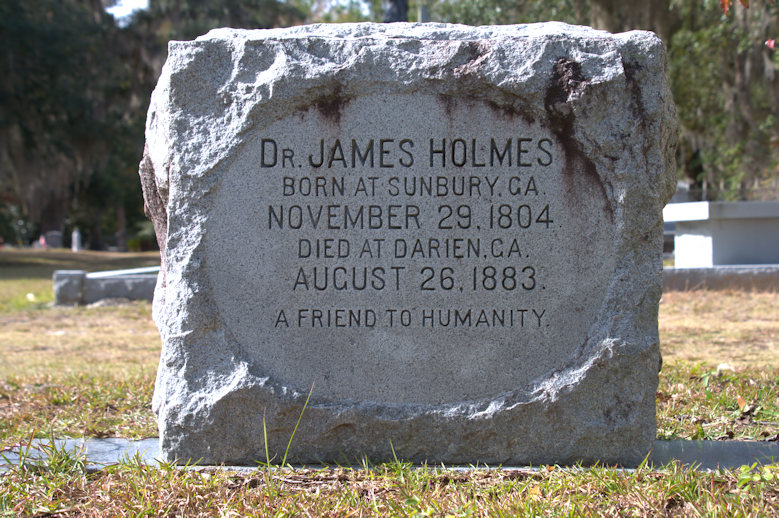
Dr. James Holmes (1804-1883) was a prominent 19th century physician who left his home to study medicine in Philadelphia and returned to practice in Darien. A fastidious note taker and diarist, Holmes wrote of his encounters as “Dr. Bullie”. Dr. Bullie’s Notes: Reminisces of Early Georgia and of Philadelphia and New Haven in the 1800s, edited by Dr. Delma Presley, was published by Cherokee Publishing Company in 1976 and remains an insightful resource for students of the era.

Hilton Family

Lachlison-Clark-Fox Families

Reverend Henry Kollock Rees & Family
 Jamie Manson (1890-1895)
Jamie Manson (1890-1895)
 Schmidt Monument
Schmidt Monument
 Churchill-Wilcox Mausoleum
Churchill-Wilcox Mausoleum
 This is the most prominent memorial in the cemetery.
This is the most prominent memorial in the cemetery.
 Wilcox Children Memorial
Wilcox Children Memorial
 Thomas A. Bailey (1828-1917) Ornamental Gate
Thomas A. Bailey (1828-1917) Ornamental Gate
 Lewis Myers Bealer (1857-1942)
Lewis Myers Bealer (1857-1942)
 Adam Strain (1840-1897)
Adam Strain (1840-1897)
 Barclay Family
Barclay Family

Sutton Children
 Lawrence Bailey Daniels (1894-1900)
Lawrence Bailey Daniels (1894-1900)
 Donnelly Family
Donnelly Family

